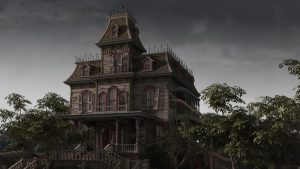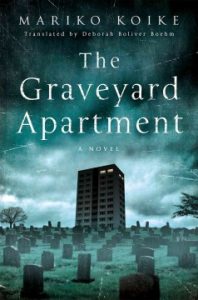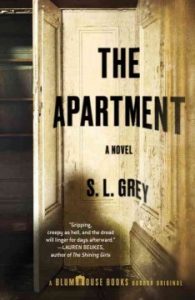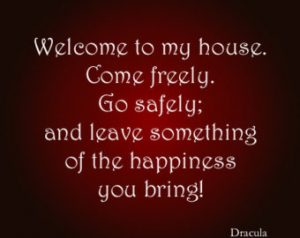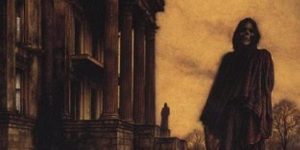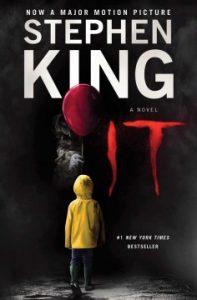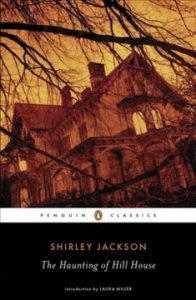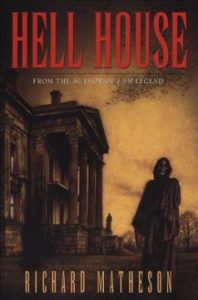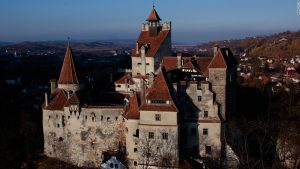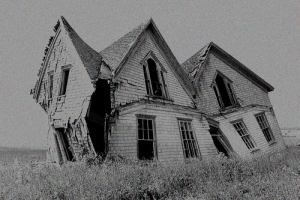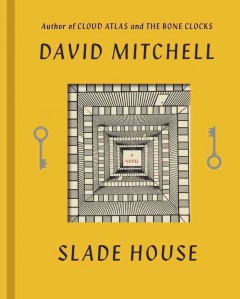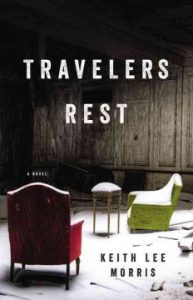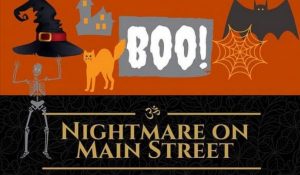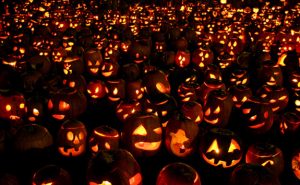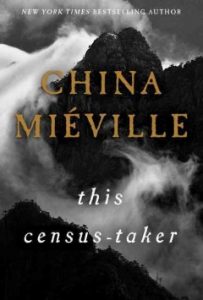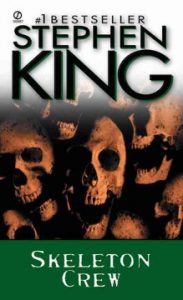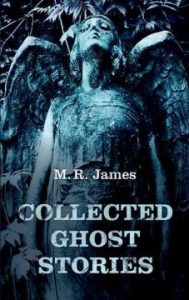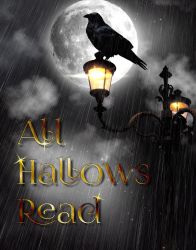
It’s that time of year, beloved patrons, as the nights get longer and the winds a little louder, and there seems nothing finer in the world than curling up with a story. If, like me, your taste runs to the kind of stories that cause the hair on your arms to rise, or that will leave you jumping at shadows, then journey on with us for a few stellar reading suggestions. And don’t forget to check out our display of All Hallows Read books here at the Main Library!
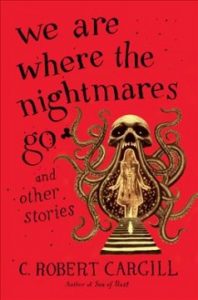 We Are Where the Nightmares Go and Other Stories: If you’ve read C. Robert Cargill’s other works, like Dreams and Shadows and Queen of the Dark Things will know that his imagination is limitless, and tends to flourish best in the twilight shadows between fantasy and horror. These stories work so well because they blend the utterly real, the overwhelmingly banal details of everyday life with a twist of real terror–a voice in the static of a bad connection; a whispered phrase that grows increasingly menacing with each repetition–and then launch off into the fantastic, ensuring that readers will be hooked from the first sentence to the last. There is plenty of fun here, as well, and fans of Colby Stevens (from Dreams and Shadows) will be thrilled to see he makes a reappearance in these pages, as well. The story from which this book takes its name, “We Are Where the Nightmares Go” is horror at its most insightful, prescient, and shudder-inducing best.
We Are Where the Nightmares Go and Other Stories: If you’ve read C. Robert Cargill’s other works, like Dreams and Shadows and Queen of the Dark Things will know that his imagination is limitless, and tends to flourish best in the twilight shadows between fantasy and horror. These stories work so well because they blend the utterly real, the overwhelmingly banal details of everyday life with a twist of real terror–a voice in the static of a bad connection; a whispered phrase that grows increasingly menacing with each repetition–and then launch off into the fantastic, ensuring that readers will be hooked from the first sentence to the last. There is plenty of fun here, as well, and fans of Colby Stevens (from Dreams and Shadows) will be thrilled to see he makes a reappearance in these pages, as well. The story from which this book takes its name, “We Are Where the Nightmares Go” is horror at its most insightful, prescient, and shudder-inducing best.
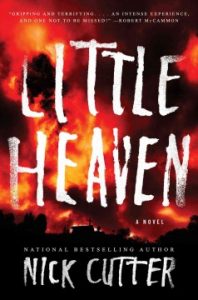 Little Heaven: Hey there, if you’re looking for an opening scene that will haunt your nightmares, then look no further than Nick Cutter’s novel about cults and powers beyond human conception….A trio of mismatched mercenaries—Micah Shughrue, Minerva Atwater, and Ebenzer Elkins–are hired by young Ellen Bellhaven for a deceptively simple task: check in on her nephew, who may have been taken against his will to a remote New Mexico backwoods settlement called Little Heaven, where a clandestine religious cult holds sway. The task should be an easy one for these professionals. But nothing around Black Rock is what it seems, and there is something stirring in the woods and the soil and the wind around Little Heaven that breeds madness. And no matter how willing our trio might be to stand and fight, their combined skills are no match for whatever is coming at them. Cutter is a writer who revels in giving readers the screaming heebie-jeebies, as fans of this other work can surely attest. But the atmosphere of this novel is so well-crafted and the characters are so quirky and believable that it’s hard to look away, even if you want to try.
Little Heaven: Hey there, if you’re looking for an opening scene that will haunt your nightmares, then look no further than Nick Cutter’s novel about cults and powers beyond human conception….A trio of mismatched mercenaries—Micah Shughrue, Minerva Atwater, and Ebenzer Elkins–are hired by young Ellen Bellhaven for a deceptively simple task: check in on her nephew, who may have been taken against his will to a remote New Mexico backwoods settlement called Little Heaven, where a clandestine religious cult holds sway. The task should be an easy one for these professionals. But nothing around Black Rock is what it seems, and there is something stirring in the woods and the soil and the wind around Little Heaven that breeds madness. And no matter how willing our trio might be to stand and fight, their combined skills are no match for whatever is coming at them. Cutter is a writer who revels in giving readers the screaming heebie-jeebies, as fans of this other work can surely attest. But the atmosphere of this novel is so well-crafted and the characters are so quirky and believable that it’s hard to look away, even if you want to try.
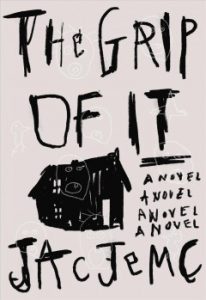 The Grip of It: A brilliant, modern spin on the haunted house trope, Jac Jemc’s slim little novel is packed with chills and shocks. While touring their prospective suburban home, Julie and James are stopped by a noise. Deep and vibrating, like throat singing. Ancient, husky, and rasping, but underwater. “That’s just the house settling,” the real estate agent assures them with a smile. He is wrong. Although the couple moved to this idyllic place to escape James’ gambling problem and rebuild their relationship, it would seem their house had different plans. It seems to be both growing and decaying around them, carving itself into Julie’s skin with each day that passes. The result is a mind-bending book that will have you second-guessing every stray noise around you, every change in the light, and have you considering the very walls around you differently. And what more could you ask from a haunted house novel?
The Grip of It: A brilliant, modern spin on the haunted house trope, Jac Jemc’s slim little novel is packed with chills and shocks. While touring their prospective suburban home, Julie and James are stopped by a noise. Deep and vibrating, like throat singing. Ancient, husky, and rasping, but underwater. “That’s just the house settling,” the real estate agent assures them with a smile. He is wrong. Although the couple moved to this idyllic place to escape James’ gambling problem and rebuild their relationship, it would seem their house had different plans. It seems to be both growing and decaying around them, carving itself into Julie’s skin with each day that passes. The result is a mind-bending book that will have you second-guessing every stray noise around you, every change in the light, and have you considering the very walls around you differently. And what more could you ask from a haunted house novel?
Until next time, dear readers, Happy All Hallows Read!


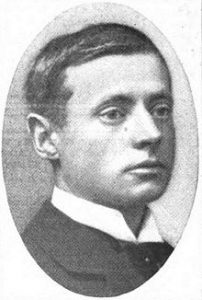
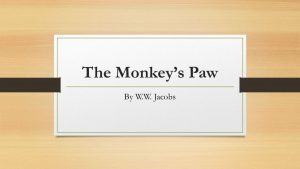 There are aspects of this story that are certainly dated, not the least of which is the “magical thing that comes from a faraway part of the Empire to destroy British people” trope. It’s a theme that pops up everywhere in Sherlock Holmes stories, it was the basis for Wilkie Collins’ The Moonstone, it’s the main premise of Dracula…safe to say, it’s a well-worn theme that helped create the idea of the “other”–a figure that was frightening and dangerous and needed to be controlled. And we should recognize that. On the other hand, this story is still read, and still shared, because it is wonderfully constructed, finely wrought, and genuinely unsettling. It is a perfect embodiment of the old maxim “be careful what you wish for”, but without feeling pedantic or rehashed. Jacobs’ talents as a humorous shine through in places, as well, helping him create characters who are sympathetic and real, even down to their inability to play a good game of chess. And it’s that connection to these people, and this ability to relate to them, even when they make the most dire of mistakes, that makes this story such an effective–and affecting–one.
There are aspects of this story that are certainly dated, not the least of which is the “magical thing that comes from a faraway part of the Empire to destroy British people” trope. It’s a theme that pops up everywhere in Sherlock Holmes stories, it was the basis for Wilkie Collins’ The Moonstone, it’s the main premise of Dracula…safe to say, it’s a well-worn theme that helped create the idea of the “other”–a figure that was frightening and dangerous and needed to be controlled. And we should recognize that. On the other hand, this story is still read, and still shared, because it is wonderfully constructed, finely wrought, and genuinely unsettling. It is a perfect embodiment of the old maxim “be careful what you wish for”, but without feeling pedantic or rehashed. Jacobs’ talents as a humorous shine through in places, as well, helping him create characters who are sympathetic and real, even down to their inability to play a good game of chess. And it’s that connection to these people, and this ability to relate to them, even when they make the most dire of mistakes, that makes this story such an effective–and affecting–one.